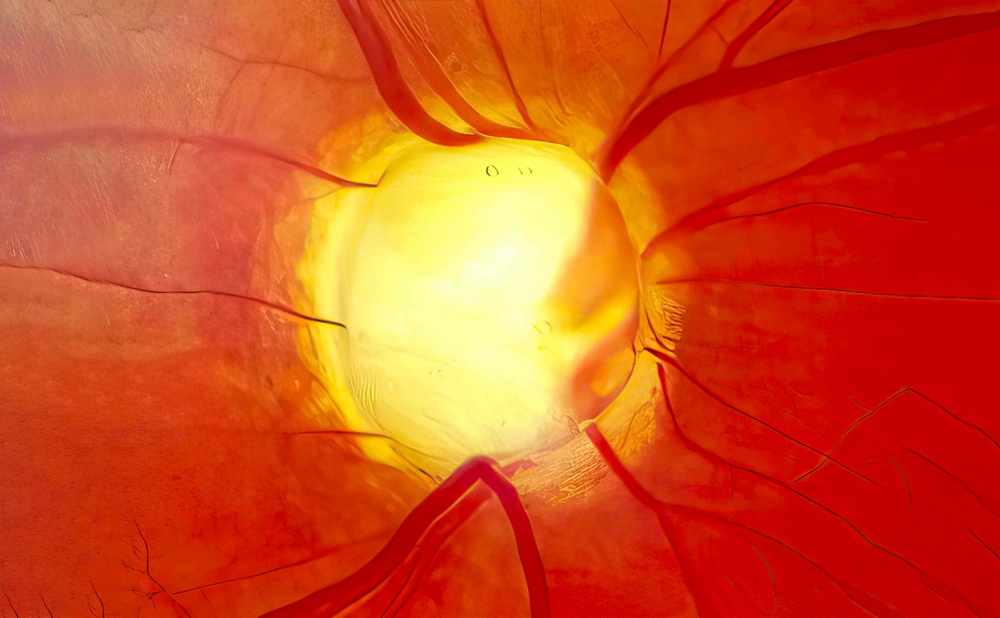Who is at Risk for Glaucoma?
May 17, 2024
Glaucoma is often called “the silent thief of sight” because it is usually asymptomatic in its earliest stages. However, you can protect the quality of your vision by learning more about glaucoma and who is most at risk for developing this serious eye condition.
Keep reading to learn who is at risk for glaucoma!
What is Glaucoma?
Glaucoma is an eye condition that occurs when there is damage to the optic nerve, typically due to higher-than-normal eye pressure. In some cases of glaucoma, the fluid in the eye, known as aqueous humor, does not correctly drain from the eye.
As this fluid builds, it increases intraocular pressure within the eye, causing damage to the optic nerve. A healthy optic nerve is vital for good eyesight.
It relays visual information from the eyes to the brain in order to create the images you see. While there are several types of glaucoma, the two major types are primary open-angle glaucoma and angle-closure glaucoma, which is sometimes known as closed-angle glaucoma or narrow-angle glaucoma). 
Primary open-angle glaucoma is the most commonly diagnosed type of glaucoma. This type of glaucoma happens gradually, as the eye fails to drain intraocular fluid as well as it should, causing increased pressure in the eye.
This type of glaucoma is usually painless and often only begins to affect vision only after the pressure has caused significant optic nerve damage and vision loss. Narrow-angle glaucoma is another type of glaucoma that occurs when the area between the iris and the cornea is very narrow.
This is the area the fluid must travel through before reaching the eye's drainage channel. This can slow fluid drainage at the front of the eye and increase eye pressure.
Narrow-angle glaucoma may cause slow vision changes, like open-angle glaucoma. However, an acute angle-closure glaucoma attack, when the angle becomes completely closed off, can cause rapid vision loss.
Who is Most at Risk for Glaucoma?
While anyone can develop glaucoma, you might be more at risk if you have any of the following risk factors:
Family History of Glaucoma
Glaucoma often runs in families, so knowing your family’s medical history is very important. You are even more likely to develop glaucoma if you have a brother or sister who already has glaucoma.
Over the Age of 60
Like many other eye conditions, your chance of developing glaucoma increases as you age. If you are over the age of sixty, you are considered to be at an increased risk for glaucoma.
Of African American or Asian Descent
If you belong to either of these ethnic groups, you are at a higher risk for glaucoma. There is no clear research that explains why this is, but African Americans are five times more likely than average to develop either type of glaucoma, while individuals of Asian descent are more at risk for angle-closure glaucoma.
Previous Eye Injury or Eye Surgery
Damage or trauma from an eye injury or previous eye surgery can affect how the fluid drains from the eye. Children who undergo certain eye surgeries while young may be at a higher risk for developing glaucoma later in life.
 Chronic Health Conditions
Chronic Health Conditions
Health conditions like high blood pressure and diabetes can increase the likelihood that you might develop glaucoma. Both of these health conditions can cause high blood pressure, which increases pressure within the eye, raising the probability of a glaucoma diagnosis.
Strong Prescription
If you are extremely near- or farsighted, you may be more likely to develop glaucoma. Nearsighted individuals are especially at risk, as worsening nearsightedness can cause changes to retinal nerve fibers and macular thickness, both of which can lead to glaucoma.
Use of Corticosteroid Medications
The long-term use of corticosteroid medications can cause glaucoma. Over time, these medications can increase intraocular pressure as they work to fight inflammation.
What Treatments Are Available for Glaucoma?
There is no cure for glaucoma at this time. Treatments focus on lowering eye pressure to minimize further damage to the optic nerve and prevent vision loss.
If glaucoma is caught in its early stages, your eye doctor may prescribe medicated eye drops or oral medications to reduce eye pressure. These eye drops or pills can include medications like beta-blockers and alpha agonists.
Another treatment option is laser therapy. Laser therapies can improve drainage and reduce the production of aqueous humor to reduce pressure.
If medications and laser therapy aren’t controlling glaucoma, your eye doctor may suggest glaucoma surgery. During certain types of glaucoma surgery, an eye surgeon attempts to create new drainage channels for aqueous humor or implant tiny ocular devices to increase eye drainage.
While knowing your risk factors for developing glaucoma is an important way to protect the quality of your vision, it is even more important to schedule regular, comprehensive eye exams. These exams allow your eye care provider to closely examine the structures within your eyes to identify the signs and symptoms of developing glaucoma.
Early diagnosis and treatment of glaucoma can help preserve the quality and clarity of your eyesight!
Do you think you might be at risk for developing glaucoma? Schedule an appointment at Advanced Eye Care & Aesthetics in Bel Air, MD, today!



